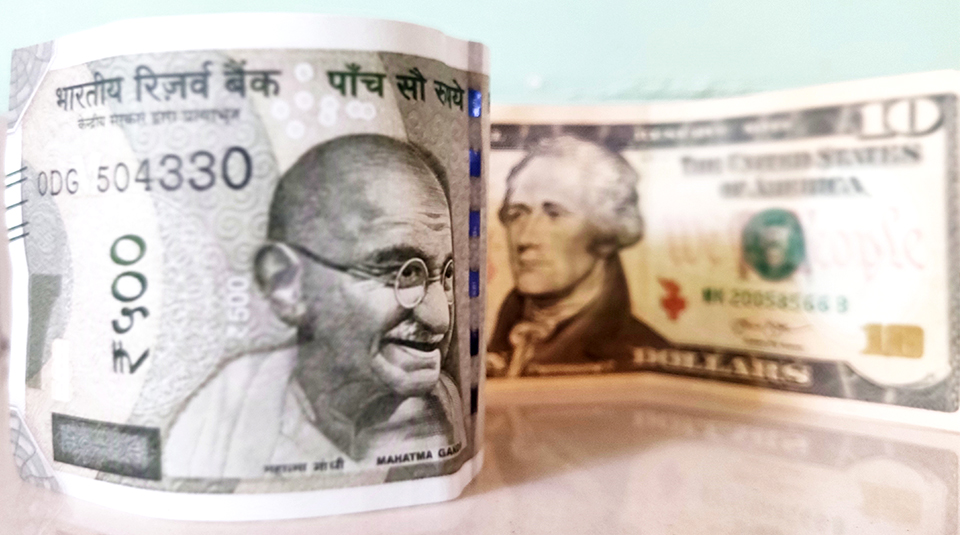
Hope in Motion, Reality in Pause
India’s economy isn’t moving in lockstep—it’s unfolding in layers. Factory floors are buzzing, but credit growth is … Continued
Read more6 June 2020

India traditionally has been net-importer of goods and services. It has been balancing its foreign exchange trade deficit by attracting capital flows. India’s high GDP growth rate and demographic dividend story has attracted lots of foreign investments as well which has helped it amass large foreign exchange reserves over the years.
Capital account flows has been higher than current account flows during 95% of the quarters in last 40 years. India has been current account deficit country in 82% of the quarters over last 40 years.

Only time when India had seen positive current account balance (on a consistent basis) was between 2001 and 2004. This is when India’s services exports (IT exports) were growing at rapid pace.


Balance of Payments = Current Account Balance + Capital Account Balance + Other transfers (refer annexure for details)
USDINR change on right hand side is inverted chart. Negative mean INR appreciation and positive RHS means INR depreciation.
Over short term, trade balance & current account, can have an impact on USD-INR movement. However, based on above, we can say that INR movement over longer term is largely dependent upon levels of capital inflows.
Thus, when we are talking about global US$ shortage and structural issues with Eurodollar bond markets, it becomes important to understand where India stands currently with respect to its foreign exchange position.
Was near 0% as at Dec-19

With slowing global and Indian economy, the deficit appears to have shrunk. India’s services exports continued to earn at its regular monthly rate during March-20 at least. This has resulted in net trade and services deficit to decrease to less than $3 bn a month from a peak of $ 11 bn a month. This has led to lower foreign exchange outflows from India on account of trade.




Deposits by non-resident Indians has been a major source of foreign exchange inflows for India over years. We can see higher cumulative flows in QE era. While QE continues, it remains to be seen if NRI flows would be adequate to fill the gap for lower FII inflows, especially with negative real interest rates.

Though on a flip side, there are opportunities to attract FDI considering world is looking to diversify its supply chain away from China.

Overall, there is nothing to suggest that what we have seen in last 40 years to change. At structural level, INR remains a depreciating currency.
India’s forex reserves have remained steady at ~$485 bn. Thus far, it has managed to escape a plunge in foreign exchange reserves despite capital flight (FII). Lower oil prices have come to India’s rescue with India’s oil basket price declining to $20 per barrel for Apr-20.

While India appears to be covered when it comes to short term debt, forex reserves are only to the extent of ~80% of total external liabilities.
Meaning, if it had to pay all its liabilities today, India does not have adequate reserves to pay all of them.


Below table gives India’s foreign exchange liabilities coverage. As at Dec-19, it had only twice as much reserves to cover its short-term liabilities.

India lost some of its forex reserves during March-20, but subsequently appears to have regained it during April and May of 2020 because of lower oil prices and trade deficit.
However, this repayment schedule brings out a vulnerability with respect to India’s dependence on short term money.
INR remains a structurally depreciating currency as of now. India remains a net importer of goods and services that are offset by capital inflows.

India receives large amounts of FII, FDI and NRI deposit flows to balance its net imports and build forex reserves. Large proportion of that came in post 2013/14, when the real interest rate differential was positive, and India promised a “growth story”. With real interest rates turning negative and GDP growth slowing down, capital flows especially FPI’s can be a risk.

This also tells us about India’s structural inflation problem that surfaces in some years. India’s inflation differential with US has stayed high at 4.4% over long term (has started to rise again now). This inflation problem is rooted in its sustained fiscal deficit. Basically, government is taking resources and not paying adequately for that from savings, resulting in inflation spurts every few years. A borrower cannot support high real interest rates to attract capital if the productivity (low) does not compensate for the high real rate!


India’s economy isn’t moving in lockstep—it’s unfolding in layers. Factory floors are buzzing, but credit growth is … Continued
Read more
A sharp rally followed by a gradual decline—this defines the Rounding Top Formation . Our analysts, Lloyd … Continued
Read more
Aman Jain, Senior Research Analyst at Multi-Act, unpacks the critical role of consumption in shaping India’s trajectory … Continued
Read moreReceive monthly updates by signing up to our newsletter.
|
Sr. No. |
Received from |
Pending at the end of last month |
Received |
Resolved* |
Total Pending # |
Pending complaints > 3 months |
Average Resolution time^ (in days) |
|
1 |
Directly from Investors |
0 |
0 |
0 |
0 |
0 |
0 |
|
2 |
SEBI (SCORES) |
0 |
0 |
0 |
0 |
0 |
0 |
|
3 |
Other Sources (if any) |
0 |
0 |
0 |
0 |
0 |
0 |
|
|
Grand Total |
0 |
0 |
0 |
0 |
0 |
0 |
Number of complaints received during month against the IA due to impersonation by some other entity:
Note: In case of any complaints received against the IA due to impersonation of the IA by some other entity, the IA may adjust the number of such complaints from total number of received/resolved complaints while preparing the above table. Further, IA must close such impersonation related complaints after following the due process as specified by SEBI/ IAASB.
* Inclusive of complaints of previous months resolved in the current month.
# Inclusive of complaints pending as on the last day of the month
^ Average Resolution time is the sum total of time taken to resolve each complaint in days, in the current month divided by total number of complaints resolved in the current month.
|
Sr. No. |
Month |
Carried forward from previous month |
Received |
Resolved* |
Pending# |
|
1 |
April, 2025 |
0 |
0 |
0 |
0 |
|
2 |
May, 2025 |
0 |
0 |
0 |
0 |
|
3 |
June, 2025 |
0 |
0 |
0 |
0 |
|
|
Grand Total |
0 |
0 |
0 |
0 |
*Inclusive of complaints of previous months resolved in the current month. #Inclusive of complaints pending as on the last day of the month.
|
SN |
Year |
Carried forward from previous year |
Received |
Resolved* |
Pending# |
|
1 |
2021-22 |
0 |
0 |
0 |
0 |
|
2 |
2022-23 |
0 |
0 |
0 |
0 |
|
3 |
2023-24 |
0 |
0 |
0 |
0 |
|
4 |
2024-25 |
0 |
0 |
0 |
0 |
|
|
Grand Total |
0 |
0 |
0 |
0 |
*Inclusive of complaints of previous years resolved in the current year. #Inclusive of complaints pending as on the last day of the year.